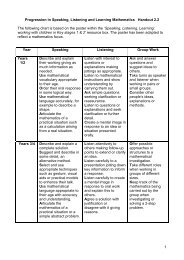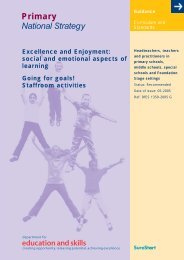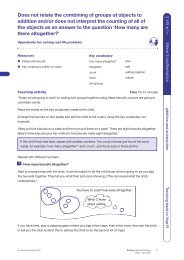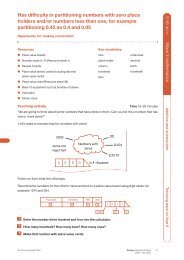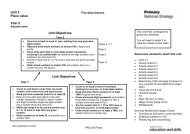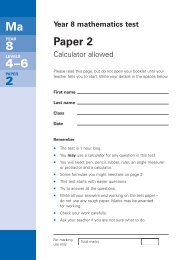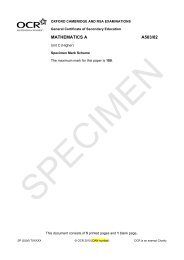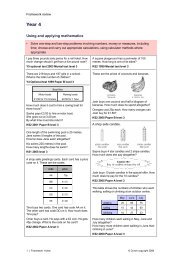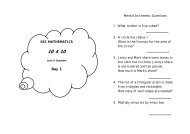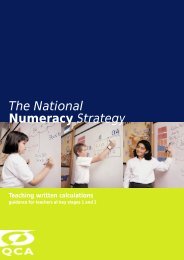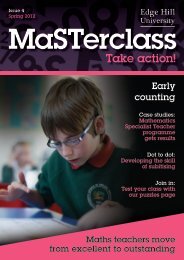Year 3 Block A: - Suffolk Learning
Year 3 Block A: - Suffolk Learning
Year 3 Block A: - Suffolk Learning
You also want an ePaper? Increase the reach of your titles
YUMPU automatically turns print PDFs into web optimized ePapers that Google loves.
16 of 20 The National Strategies ⏐ Primary<strong>Year</strong> 3 <strong>Block</strong> A: Counting, partitioning and calculatingAssessment opportunity: Ma2, Written methodsAs children explain their written methods for adding and subtracting three-digit numbers, look forchildren who have an efficient method for examples that involve bridging 10 or 100 as well asexamples that do not.Children round two-digit and three-digit numbers to the nearest 10 and 100 and use this to giveapproximate answers to addition and subtraction calculations. For example, they recognise thatthe answer to 247 + 76 will be just less than 250 + 80 or 330, and 183 – 48 is about 180 – 50 or130. They understand that finding an approximate answer is a useful strategy for checking acalculation.Assessment opportunity: Ma2, Numbers and the number systemLook out for evidence of children using a number line to demonstrate how they are makingdecisions whether to round numbers up or down. Look out for children who can order numbersup to 100 and then 1000 and justify their answers through an understanding of place value.Children begin to work systematically, using lists or tables to organise their solutions toproblems such as:A farmer has cows and chickens on the farm. Altogether the animals have 24 legs. Howmany cows and chickens could there be on the farm?Using problems such as these gives the opportunity to assess children’s ability to communicatetheir mathematics and, in particular, to show how they are looking to develop organisedapproaches to recording their work.Children use their understanding of place value to support multiplication and division involvingmultiples of 10 to answer questions such as:Three pencils cost 90p altogether. How much does each pencil cost?Rani picks up seven 50 g weights. How much do these weigh altogether?Sam is making cards. Each card takes 20 minutes. He starts at 4:30 and makes four cards.What time does he finish?Children begin to use partitioning to multiply and divide two-digit numbers. For example, theycalculate 24 × 4 by partitioning 24 into 20 and 4 and working out 20 × 4 4 × 4, and 96 ÷ 3 bypartitioning 96 into 90 and 6 and dividing each part by 3 to get the answer 32. They identifyremainders in related calculations such as 95 ÷ 3, and begin to round the remainder up or downwhen the context demands it. For example, if cars can each transport up to 4 people, they workout that 12 people would need 3 cars but 13 people require 4 cars.Children solve problems such as:Use three of the digits 2, 3, 4, 5 and 6, to create multiplication calculations (e.g. 34 × 6).What products can you make? What is the largest/smallest product?They work in pairs or groups, with all children in the group contributing to decisions about themethods they use, whether they will use resources and how they will record their work.00543-2008DOM-EN-11 © Crown copyright 2009



